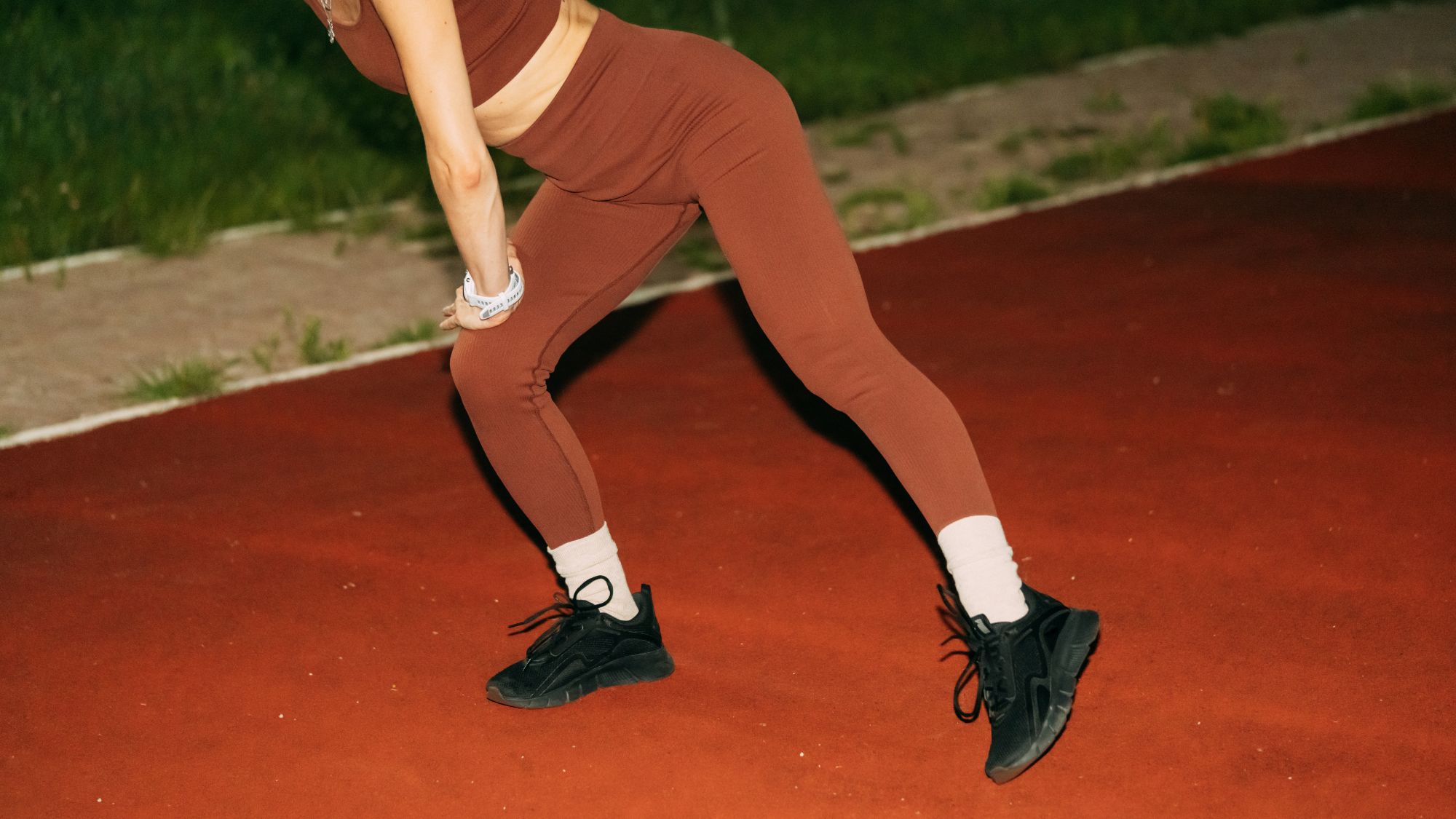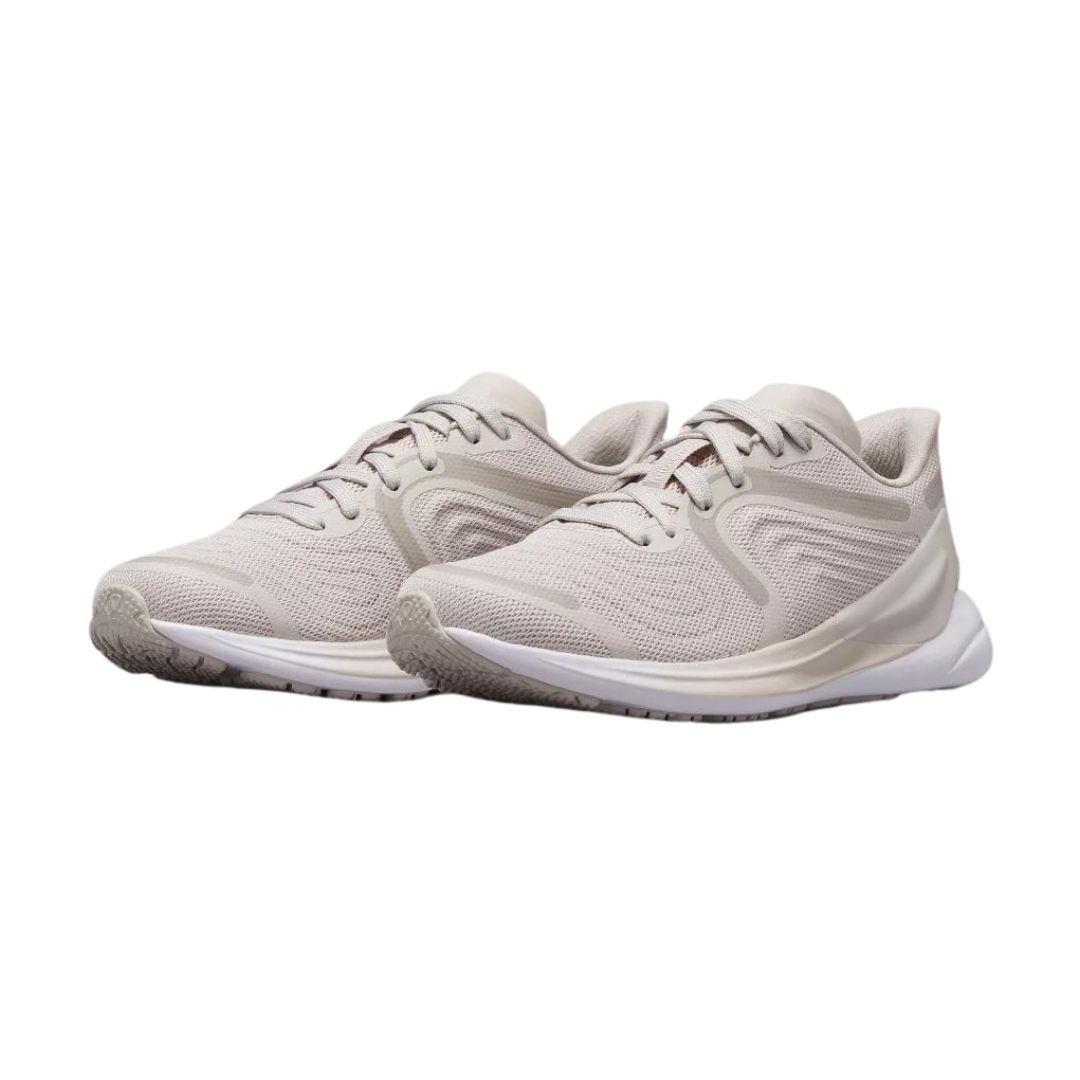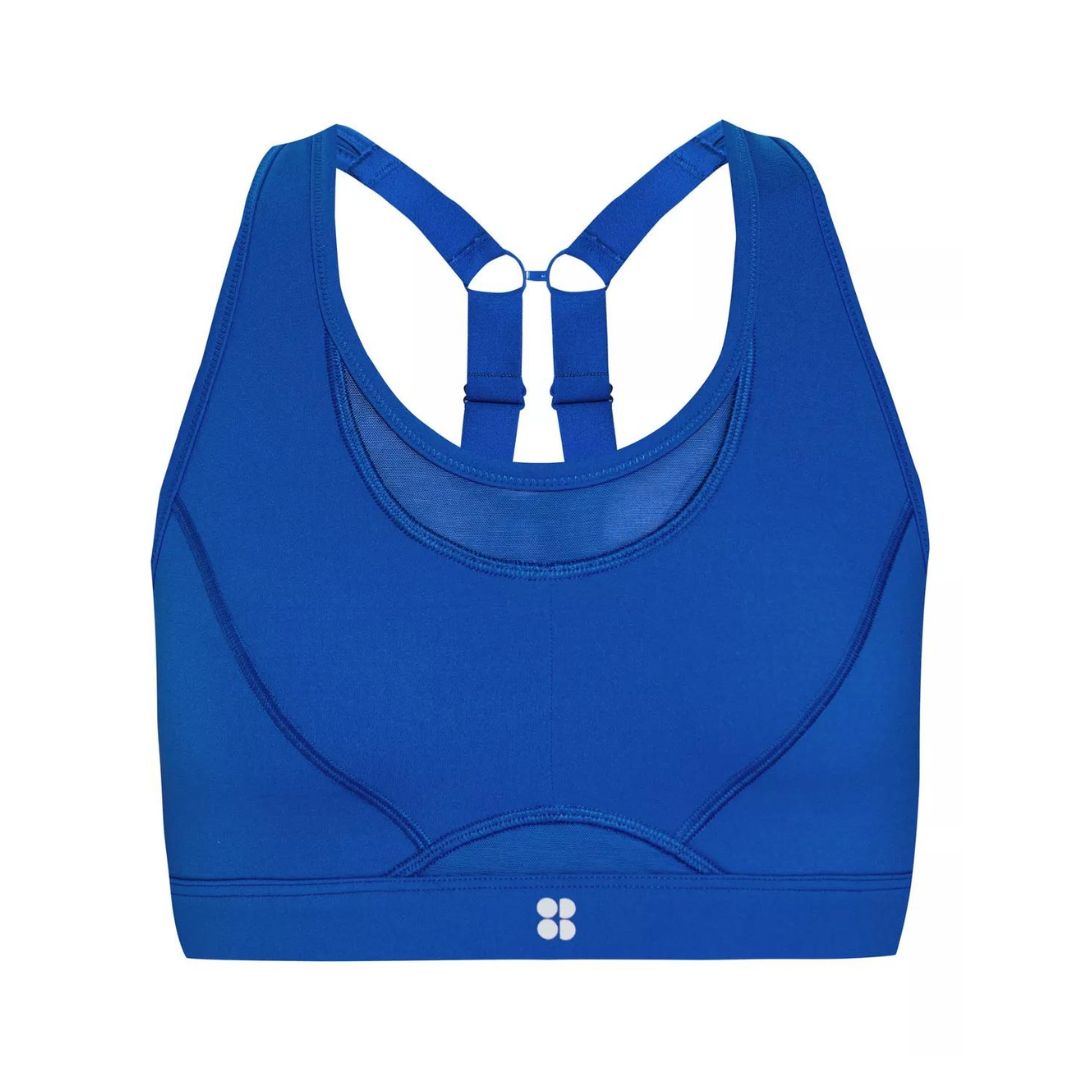
So, you're a keen runner. Let me guess: you love lacing up for your local Parkrun, follow Dina Asher-Smith on Instagram, and are well-versed on the best running shoes for women. You might have a 10km, or even a half marathon or marathon under your belt - and today, you're Googling how to run faster, as you're also toying with the idea of training to improve your time.
Runners have long used how quickly they can complete certain distances as a metric - Paula Radcliffe smashing the Women's World Marathon Record with a time of 2 hours 15 minutes will be forever immortalised in my mind - but it's important to remember that everyone's pace is different. Running app Strava saw users share over 12 billion activities last year - that's 51 million activities uploaded each week - highlighting just how many varying paces there will be within the field.
Every individual is unique and will run at a different speed to, say, their best mate, so it's important not to compare yourself to others. What's fast for you may be slow for some, and vice versa. Something that's also important to remember: running is also about far more than simply hitting a time. I'm a nine-time marathoner and Boston Qualifying runner, but for me, running is mindful movement: it's headspace, mental clarity, and freedom.
That said, learning how to run faster (hint: speedwork will be a constant in your weekly workouts) can be seriously empowering and a fun way to improve not only your 10km time, but your fitness and confidence levels, too. Ready to give it a go? Follow our expert tips, and scroll our guides to running tips for beginners, running in the heat, and strength training for running, while you're here.
How to run faster: 10 simple tips for improving your time
1. Figure out your pace
According to Ben Priddle, Sports Scientist at NURVV, the first thing to consider when working out how to run faster is what your current pace is. If you run regularly, you'll likely know if you sit at around an, for example, eight, nine or ten-minute mile.
Top tip: Not sure? Have a scroll of your past runs and look at the total time to see. From there, you can work out a "push" pace - that is, a challenging pace that pushes you out of your comfort zone.
Lillie Bleasdale, Head Coach at PASSA run coaching, agrees, adding that in its most basic explanation, your running speed is how fast you're moving while out pounding those pavements. "If you finish a three-mile run in 27 minutes, then your pace is 9 minutes a mile."
Celebrity news, beauty, fashion advice, and fascinating features, delivered straight to your inbox!
Once you've worked out your running pace, you can crack on with training to improve that pace.
2. Incorporate speed into your sessions
So, you currently run a nine-minute mile. According to Priddle, research has proven that sessions like tempo runs, interval sessions and hill running will all serve to help you run faster. How? "Tempo runs will increase your speed endurance, whereas interval sessions and hill running focus on improving overall speed," he shares.
- Tempo run: A run where you start slower and get quicker.
- Interval session: A run where you warm up, then sprint for bursts throughout your session (aim for 70% to 90% of your rate of perceived exertion RPE).
- Hill running: A run where (yep, you guessed it), you run (ideally sprint) up a hill.
Bottom line: However you choose to do it, one key factor in improving your running speed is making sure you're mixing things up a little. "A variation in your running is essential," shares Priddle. Think about it: if you run all of your runs at the same pace, your body isn't learning, adapting or overcoming, which is why having a session a week where you push yourself and your body is vital for improving your split times.
3. Add strength training into your programme
According to Bleasdale, not only does weight training lower your risk of injury, but improves your speed, too.
"Explosive exercises and plyometric training can help to improve speed due to increased activation of our fast-twitch muscle fibres, which are recruited by the body during shorter, faster stints of running," she explains.
Try squat jumps, jumping lunges, and skater hops next time you're in the gym, or read our Health Ed's strength training for running guide now.
4. Focus on adding some distance-specific speed training into your weekly plan
If you're a total beginner, trying a 30-second sprint on a treadmill for, say, five rounds may be a good place to start. Listen to your body - you'll know how hard you can push (or if you don't, scroll to the bottom for Priddle's recommendation for training plans).
However, if you're a more experienced runner looking to improve your time, Bleasdale says that distance-specific speed training can be a key method to getting faster. "While distance and endurance runs are important, sessions, where you run fast and far, are the ones that are going to train our legs and body to run at a faster pace." Got that?
5. Factor in enough time
Wondering if you'll see results in two weeks, four, six or more? Good question - and while this will vary from person to person, Bleasdale encourages you to be patient, as you'll likely see results in your speed after around eight weeks.
"If training to hit a certain speed goal, I'd suggest no less than eight weeks of specific speed training, however, this really depends on your starting point and the goal you're aiming for," she emphasises.
With that in mind, make sure, if you are keen to get faster, that you factor in enough time and also have the time to commit. There's nothing worse than goal setting and then feeling let down as you didn't have the time to reach said goals.
6. Slow things down
Fun fact: Running more slowly might actually make you run faster. How so? Well, short answer, because as above, you need variety in your running - both faster and slower. Most coaches will advise that you factor in one "recovery" run a week, where you run as slowly as you can to enable the legs to flush out and the body to recover.
"Every run doesn’t have to be the fastest run that you ever do - in fact, it shouldn't be. Your body would never have time to recover," stresses Priddle.
7. Believe that you can
Did you know? According to Ruth Anderson, lead psychologist with British Cycling and director of MiND HQ, all Olympians have comparable physical ability, but what separates those who make it to the podium is their psychological ability to thrive under pressure.
Have a nagging inner voice that likes to remind you that you might fail? "The mistake most people make is trying to avoid negative thoughts altogether," says Anderson. But that can actually cause more stress (as soon as someone tells you not to think about something, you’re bound to think about it). The key is learning to identify and then reframe negative thoughts, Devonport adds. "As humans, we are predisposed to be self-critical, but we should talk to ourselves as if we were encouraging another person. We’re more productive that way."
Fun fact: research published in the Journal Of Personality And Social Psychology has also found that people who speak to themselves using their own name or the pronoun "you" (rather than "I") perform better under stress.
Speak to any sports psychologist about goals, and they’ll also explain the importance of the "growth mindset" – the idea that ability is limitless and can be built upon gradually over time. "A growth mindset is all about improving yourself by small amounts," says Dr Tracey Devonport, a sport and exercise psychologist to many top Olympic athletes from the University of Wolverhampton. "We should think in terms of small goals [get through that meeting, get a good appraisal] and see everything else as a chance to grow, learn and improve on our ability." A lesson for the impatient – little changes seriously add up.
So yes, physically getting faster is as much about your mental as physical health - make sure you're prioritising yours, believing that you can achieve hard things, and praising yourself when you do.
8. Reduce your risk of injury
Perhaps perceived as boring, but preventing injury is absolutely key if you're starting to push your pace. Why? Well, it's all well and good smashing loads of interval sessions out, but if you're not looking after your body, you run the risk of not being able to run altogether.
So, what does Priddle advise to injury-proof your body? "Outside of running, core training, weight training and improving flexibility (e.g. yoga) will help your body cope with the demands of the higher intensity and reduce your risk of injury," he shares.
You’ll also be grateful for the increased flexibility as your running gait changes and adapts to running at higher speeds, he adds. Need training tips for your next marathon? You're in the right place.
9. Remember to recover
Finally, don't forget rest days, easy days, or recovery runs, shares Bleasdale.
"Without these, your body won’t be able to tolerate the higher loads you're pushing it through when you are training to improve speeds," she explains. Our guides to yoga poses and cold water therapy might just help - a great way to ease tight calves or delayed onset muscle soreness, aka DOMS.
10. And finally, don't forget that all goals are individual
Whatever your reason for wanting to improve your running speed, it's absolutely vital not to compare yourself to others. The many benefits of running - improved cardio fitness, heart health and more - stand whether you're running a seven or twelve-minute mile. Only your speed matters - no one else's.
Do try and remember that your journey will have a different path to, say, your best mates, says Bleasdale.
How to run faster: your training plan
Now you've scrolled our top tips, it's time to get stuck in with a sports scientist-approved run plan.
For someone who is a beginner to speed sessions
Runs: Two to three times a week at the same pace.
Priddle's advice? "The focus should be building up a strong and resistant base through strength work and running. Make one of the runs a higher-intensity session, too."
Mon | Tue | Wed | Thu | Fri | Sat | Sun |
Easy run | Rest | Intervals | Rest | Strength training | | Long run |
For someone who has experience of speed sessions
Runs: Four or more times a week at a varying pace.
Priddle's advice? "Look to make two sessions "high quality" speed focused sessions, one long run, and one easy run per week," he advises.
Mon | Tue | Wed | Thu | Fri | Sat | Sun |
Rest | Interval training | Rest | Easy run | Rest | Tempo run | Long run |
Just fancy trying an intervals session?
Give Bleasdale's recommendations below a try.
- 6 x 3 minutes @ goal 5km pace (90 seconds recovery between each rep)
- 5 x 1km @ faster than goal 10km pace (2 minutes recovery between each rep)
- 3 x 1 mile @ faster than goal half marathon pace (2 minutes recovery between each rep)
Happy running.
Shop MC UK's go-to running products below:

Ally is Marie Claire UK's Senior Health and Sustainability Editor, a well-regarded wellness expert, ten-time marathoner, and Boston Qualifying runner.
Utilising her impressive skillset and exceptional quality of writing, she pens investigative, review and first-person pieces that consistently demonstrate flair and originality.
As well as writing, Ally manages a team of freelancers, oversees all commissioning and strategy for her pillars, and spearheads the brand's annual Women in Sport covers, interviewing and shooting the likes of Mary Earps, Millie Bright, and Ilona Maher. Shortlisted for three BSMEs and winning one in 2022, Ally lives and breathes her verticals: her eye for a story and connections within the wellness sphere are unrivalled. Follow Ally on Instagram for more.



